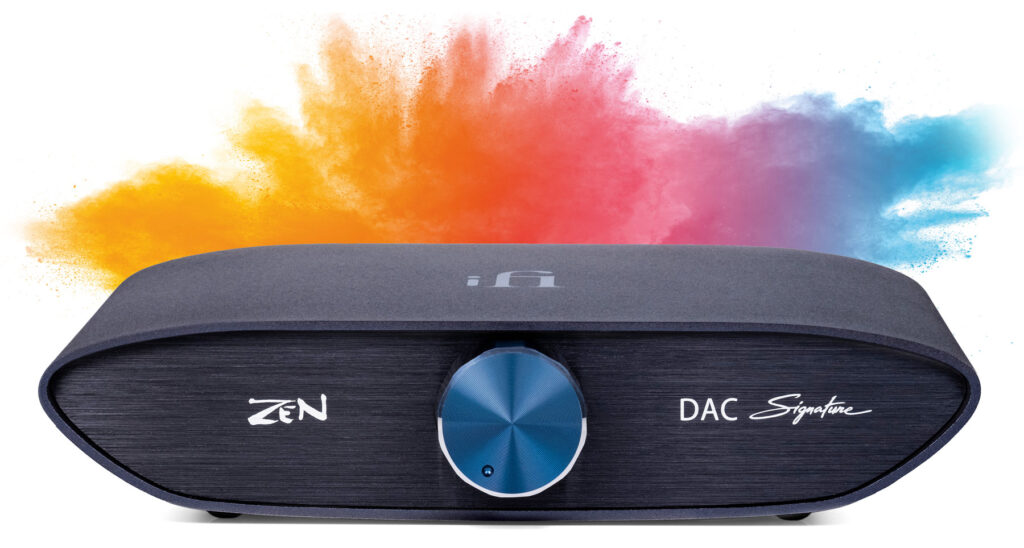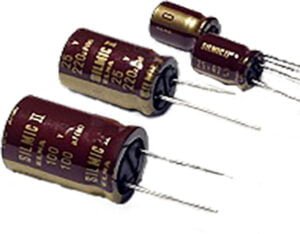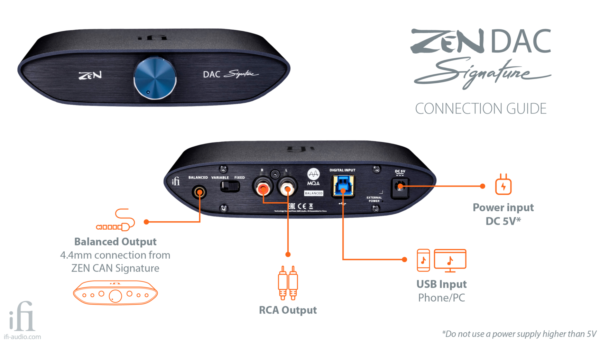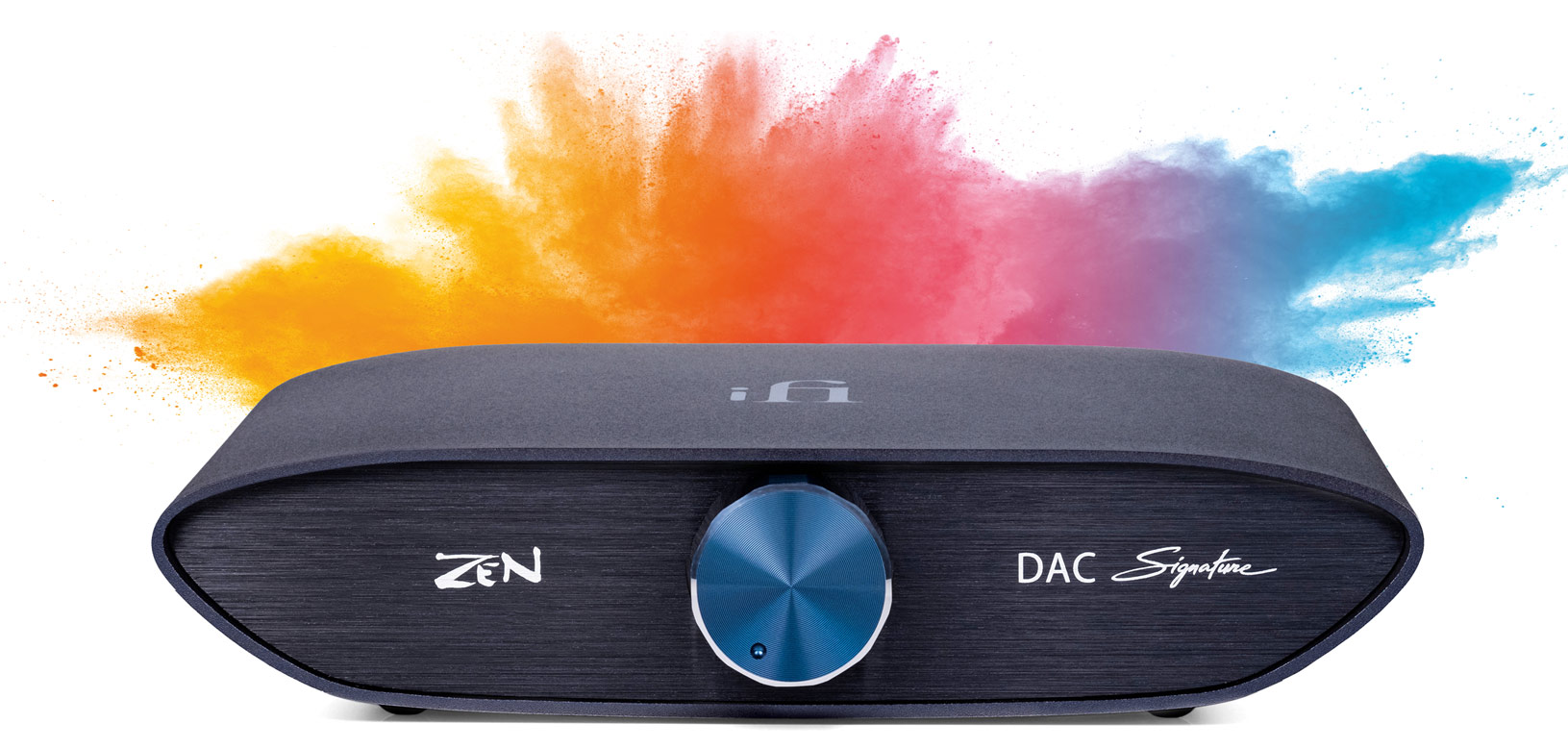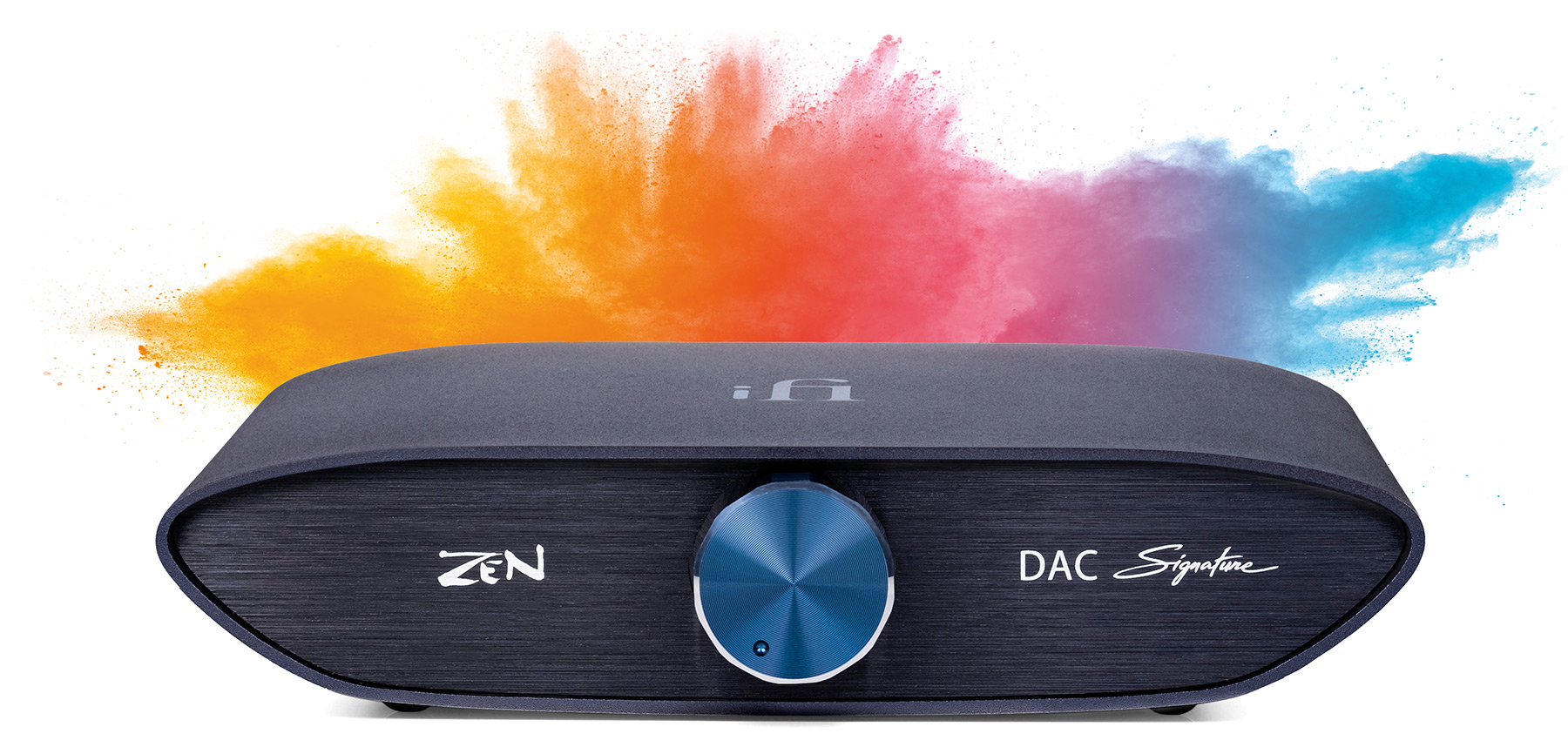Pure and (not so) simple.
Enveloped in the Space Blue finish now associated with our Signature products, the ZEN DAC Signature has been designed to be a DAC, pure and simple.
Without the built-in headphone amp, its sole purpose is to feed an external amp, be it a headphone amp, or an amp and speakers.
Its simplified circuitry provides the opportunity to upgrade the signal path and critical components within it. The existing ZEN DAC introduced the benefits of fully balanced circuit design but the ZEN DAC Signature further ups the ante with its enhanced true-differential balanced topology.
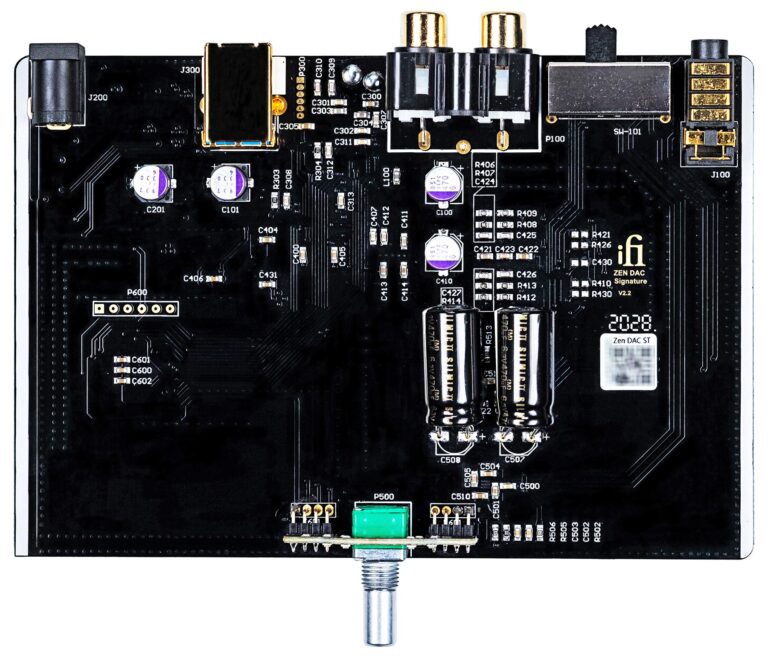
Superior circuits. Superb sound.
Various key surface-mounted circuit components have been upgraded to high-end devices, including Panasonic OS-CON and Elna Silmic II capacitors.
The circuit has been refined to ensure short, direct signal paths for optimal signal purity. This results in even greater sonic detail and expression.
A true native…
The ZEN DAC Signature’s digital stage retains the True Native DAC architecture much loved here at iFi as well as
It delivers bit-perfect PCM (up to 32-bit/384kHz), native DSD (up to DSD256), DXD and MQA – the hi-res streaming technology, as used by Tidal’s ‘HiFi’ tier. The sample rate of incoming audio data is indicated by a multicoloured LED residing behind the aluminium volume control.
The iFi-programmed XMOS chip, which processes data received at the USB input, and jitter-eradicating, audiophile-grade oscillators, contribute to exemplary handling of digital audio signals as they are received, processed and converted to analogue form.

Soul connections
The USB Type B input supports the ‘SuperSpeed’ USB 3.0 standard, as well as USB 2.0 for backwards compatibility. It is asynchronous, meaning that the data rate is regulated solely by the ZEN DAC Signature’s specialised audio clock circuitry for accurate, jitter-free data transfer from the source device.
There is a pair of RCA sockets for single-ended connection to an amp, plus a Balanced 4.4mm output – this enables balanced signal transfer between compact products that cannot accommodate traditional, bulky XLR connections.
When connected to an amp or active speakers equipped with a balanced input – either a 4.4mm Balanced input, or stereo XLR inputs via a 4.4mm-to-XLR cable – the full benefit of the ZEN DAC Signature’s balanced circuit design can be heard. It will speak to your soul.
Fixed or variable. You decide.
The ZEN DAC Signature’s outputs can be switched between ‘variable’ and ‘fixed’.
The variable setting applies volume control to the audio signal, enabling the ZEN DAC Signature to act as a preamp to connect directly to a power amp.
The fixed option bypasses the volume control, fixing the output at 4.2V (balanced) or 2.1V (single-ended) for connection to an external preamp, integrated amp or active speakers with their own volume control.

Dynamic Duo
The ZEN DAC Signature works well with the ZEN CAN Signature. Products can be bought separately but a ‘ZEN Signature Set’ is now available. This comprises both ZEN Signature units plus a high-performance 4.4mm Balanced cable (worth £69 when purchased separately) to connect them together.
When used in tandem, the two ZEN Signatures make a fantastic, desktop-sized headphone system for both digital and analogue sources, further extending the reputation of iFi’s ZEN Series for delivering exceptional performance and versatility at remarkable prices.
Tom Evans who makes very nice phono stages made the following astute comment:
A rumble filter simply adds to the bass cut making your already “cut” records sound bass light. Plus, it “time-steps” the bass in relation to the higher frequencies (where our hearing is most sensitive) so much so it can confuse the ear into believing the bass is playing out of tempo.
iFi solution:
Since the very first iPHONO launched in 2012, we have used our own in-house ‘Subsonic Filter’. It made it into the iPHONO2 and the iPHONO3 and now, the ZEN Phono which is the very first time this filter is seen in such an affordable price level.
As there is only minimal vertical modulation remaining at very low frequencies with an an actual cut LP that is playable, we know that “vertical modulation” at low frequencies must be warp.
So we designed a filter to take advantage of this.
This is not artificial but real knowledge. By understanding fully how LPs are cut and replayed, it is possible to filter record warp strongly without at the same time attenuating low bass or adding group delay.
